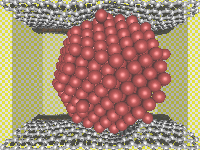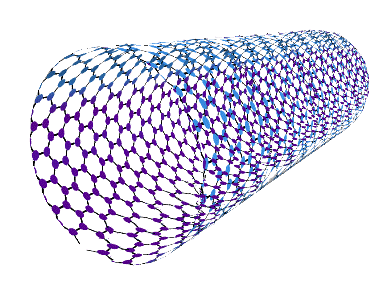_process section (discharge) for electrical nanotubes
Carbon nanotubes CNTs and its various applications in electricity distribution networks
Researcher and author: Dr. Afshin Rashid

Note: the use of nano technologies in power transmission lines while increasing the reliability of the network reduces energy losses to a significant extent and makes power transmission easier does. One of the widely used technologies in the electrical industry is carbon nanotubes (CNTs), which is a hollow cylinder with a wall made of carbon atoms.
Carbon nanotube wires have an important effect in increasing electrical conductivity and mechanical strength. The conductivity of carbon nanotube cables can be made higher than metals such as copper and aluminum by doping with iodine element. And while their weight is much less and about one sixth of metal wires. The tensile strength of the outermost wall of a CNTs carbon nanotube (multi-walled) is a hundred times higher than that of aluminum. Carbon is one of the amazing elements of nature that can be found in nature in four forms. All four forms are solid and include diamond nano tube and buckyball graphite. The size and physical shape of nanomaterials and how their inter-atomic bonds have a great impact on the properties of materials; The most important physical property of nanotubes is their electrical conductivity. The electrical conductivity of nanotubes is completely different depending on the angle and type of connections; Each atom is vibrating in its position, when an electron (or electric charge) enters a set of atoms, the vibration of the atoms increases and they transfer the electric charge as a result of collision with each other. The higher the order of atoms, the higher the electrical conductivity of that group of nanotubes. The division has been done based on the arrangement of carbon atoms in the nanotube and as a result of their conductivity; For example, chair-type nanotubes are 1000 times more conductive than copper, while zigzag and asymmetric types are semi-conductive. The semiconducting property of nanotubes changes depending on their type. Most applications of carbon nanotubes have so far focused on small-scale applications.
It is possible to refer to the properties of CNTs nanotubes as electricity transmission lines and as a foundation for structural materials. Using a superacidic solution, carbon nanotube fibers with a length of several hundred meters can be produced.

Transmission and distribution of electrical energy by the structure of CNTs carbon nanotubes
The electrical conductivity of nanotube cables can be in the limit of the conductivity of metal wires, while their weight is much less. made a power transmission cable with double-walled carbon nanotubes and conducted current transmission at standard network voltage. Cables based on carbon nanotubes can have the same performance as conventional metal cables and in the same Now their weight should be about one sixth. These cables can be widely used in applications such as aviation and automotive industries where weight is an important factor.
Cables made of pure CNTs nanotubes are woven and can be tied together without losing their conductivity. To increase the conductivity and stability of these cables, nanotubes can be doped with iodine. The ratio of the conductivity coefficient to the weight, which is called the specific conductivity coefficient, is higher for this nanotube compared to metals such as copper and silver. And it is easier to transfer current in the network and the amount of current loss in transmission is less.
Researcher and author: Dr. Afshin Rashid
Specialized doctorate in nano-microelectronics



